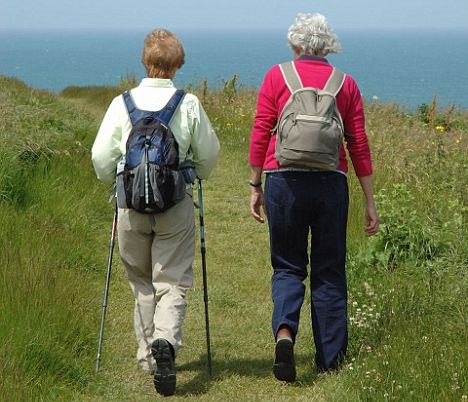Strolling Really Is Just Falling And Catching Yourself

The thrashing of an acrobat who’s missed a venture on the equalization pillar may not be far away from what whatever remains of us experience consistently. Each one stage we take is truly a small fall, a scientific model recommends. The arbitrary looking variety in our footfalls is really an arrangement of adjustments. Our strides are all screw-ups—yet because of the fixes that happen without us knowing, our strolling schedules resemble an impeccable ten.
Manoj Srinivasan, who runs the Movement Lab at Ohio State University, and Yang Wang, a doctoral understudy at the time, examined strolling down to the millimeter. They put movement catch markers on individuals’ feet and pelvises, as though setting up their legs to star in Avatar 3. At that point the 10 subjects strolled on treadmills at different velocities, while cams caught each movement.

The information demonstrated that nobody was an impeccable walker. “Each step is somewhat unique in relation to each other step,” Wang says. Instead of setting their feet in the same spots on the treadmill with each one stride, subjects always strayed to the left or right, front or back.
Wang and Srinivasan set out to make a model that would clarify this variety. Is it true that it is as irregular as it looks, or are individuals’ footfalls unsurprising?
“We were attempting to discover a scientific connection between the following foot position and the current pelvis state,” Wang says. Modest leftward or rightward moves in the pelvis speak to the moving of that entire substantial middle we need to adjust on top of our legs.
At the point when the specialists contrasted these pelvis development with varieties in footfalls, what they found wasn’t irregular in any way. More than 80% of the side-to-side variety in foot arrangement could be anticipated by developments in the pelvis already.
At the point when the top a large portion of the body begins to tip left, we set our next step a smidgen more remote left to inspire ourselves back. When we wobble right, we step more extensive in that bearing. With each one stride, we begin to fall, and “we are continually making little redresses to be steady,” Wang says.
The scientists even found that following the pelvis anticipated where an individual’s feet would fall better than following their real feet. Partly through each one stride, they compose, “the pelvis “knows” substantially more about the future foot position than the foot itself.”
They precluded other conceivable impacts as well, in the same way as where an individual was on the treadmill cinch. The single best clarification for an individual’s example of footfalls was change toward oneself.
Seeing how people walk could help specialists create better human exoskeletons and strolling robots, Wang and Srinivasan say. Also knowing how we keep ourselves stable may some time or another help us avert falls in individuals who are helpless against them, for example, the elderly or those with development issue.
There’s constantly vulnerability toward oneself to outing us up, however. Since they know they’re falling constantly, do the scientists question their own particular bipedal capacities? “Sincerely, less,” Srinivasan says. “These arrangement of slips and recuperations are pretty sub-cognizant for a solid grown-up.”
Then again, he estimates that to stay safe, possibly “you can’t ponder it excessively much.”
